Why should you include data collection methods in your Community Health Assessment (CHA) toolkit? A CHA is like an electronic health record for a county, Metropolitan Statistical Area or region. Done well, the CHA captures clinical and social needs, informs options for new service delivery, facilitates collaboration among community stakeholders and ultimately can impact health outcomes.
Public health departments today must collect data on everything from diabetes outcomes to housing, income, immunizations and many other measures. Read on for the top methods for collecting the most challenging yet insightful data.
Community Health Assessment data collection methods
Like an EHR, the CHA includes defined components. The National Association of County and City Health Officials’ Mobilizing for Action through Planning and Partnerships (MAPP 2.0) model has several components and three assessments under the MAPP 2.0 model Mobilizing for Action through Planning and Partnerships Assessments:
Community Partners Assessment;
Community Status Assessment; and
Community Context Assessment.
When conducting their new assessments, health departments should use their prior CHA and Community Health Improvement Plan, and the CHA and CHIP can support their efforts toward accreditation by the Public Health Accreditation Board.
An effective CHA requires both quantitative and qualitative data; the latter are often unstructured. Local public health departments report that qualitative data collection is the hardest part of the CHA/CHIP. The most common methods that LHDs use to collect qualitative CHA data are focus groups, interviews and hybrid surveys.
Key strategies to include in your Community Health Assessment toolkit
These methods generate massive amounts of unstructured data, each offering unique insights and challenges. That's why they're essential in your CHA toolkit.
1. Focus groups
Logistics: LHDs record and transcribe focus group sessions to convert community dialogue from unstructured data to analytics-driven insights.
How focus groups are unique: They draw out needs through conversations the community has with itself.
Data challenges: Recording and transcribing data accurately, including information in multiple languages.
Insight opportunities: Health information from underserved and marginalized communities, e.g., LGBTQ, low-income and ethnic groups.
How LHDs have improved focus groups: Using gift cards and giveaways to incentivize community participation, which must be robust for valid, representative data; using translators to capture input from non-English and English as a second language participants.
2. Interviews
Logistics: LHDs use telephone, Zoom and in-person interviews to collect information from community-based organizations and partnerships, e.g., houses of worship, libraries and food banks.
How the interviews are unique: Provide a largely accurate picture of community needs from the people who serve there.
Data challenges: Unintended bias from a single, siloed voice or perspective and topic drift.
Insight opportunities: Multiple voices can really tell the story of a community.
How LHDs obtain participants for interviews: Bringing lunch, buying coffee and leveraging existing community partnerships.
3. Surveys
Logistics: Surveys collect information anonymously through defined and open-ended questions by paper or via electronic means.
How surveys are unique: Collect information that individuals and groups wouldn’t normally share.
Data challenges: Surveys can generate a bevy of unstructured data, which LHDs must convert to identify community priorities. Without incentives, participation can be low.
Insight opportunities: Large amounts of both quantitative and qualitative data.
How LHDs have improved surveys: Using QR codes and login URLs to distribute and track; using generative artificial intelligence tools to group and dissect data based on CHA focus areas. It’s important to be sensitive about PHI when putting data into AI.
Ideally, health departments should use all three methods, e.g., interviews, surveys and focus groups. Re-evaluating your CHA can help you incorporate more methods into your action plan. It can also help you realize the CHA’s full purpose: to serve communities, strengthen health departments and improve public response and culture.
The challenge and opportunity of CHA data
Want to maximize your opportunities? DataGen’s CHA Advantage is a time-saving solution that meets CHA requirements through a streamlined process, customizable tools and multi-factorial data analysis and insights.
Come see us at the New York State Association of County Health Officials conference or schedule a free demo to learn more about our Community and Market Planning Solutions.


Comments
Post a Comment